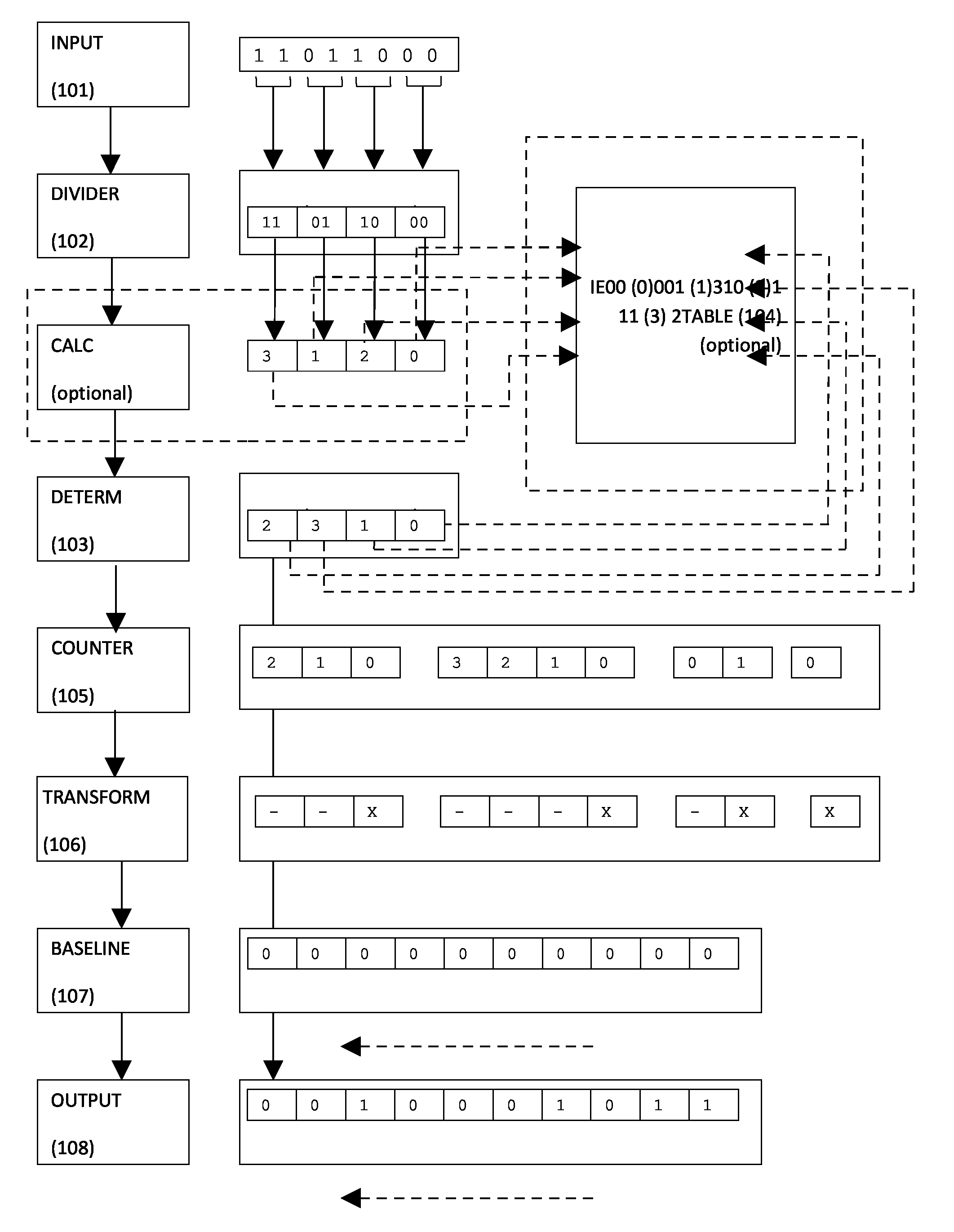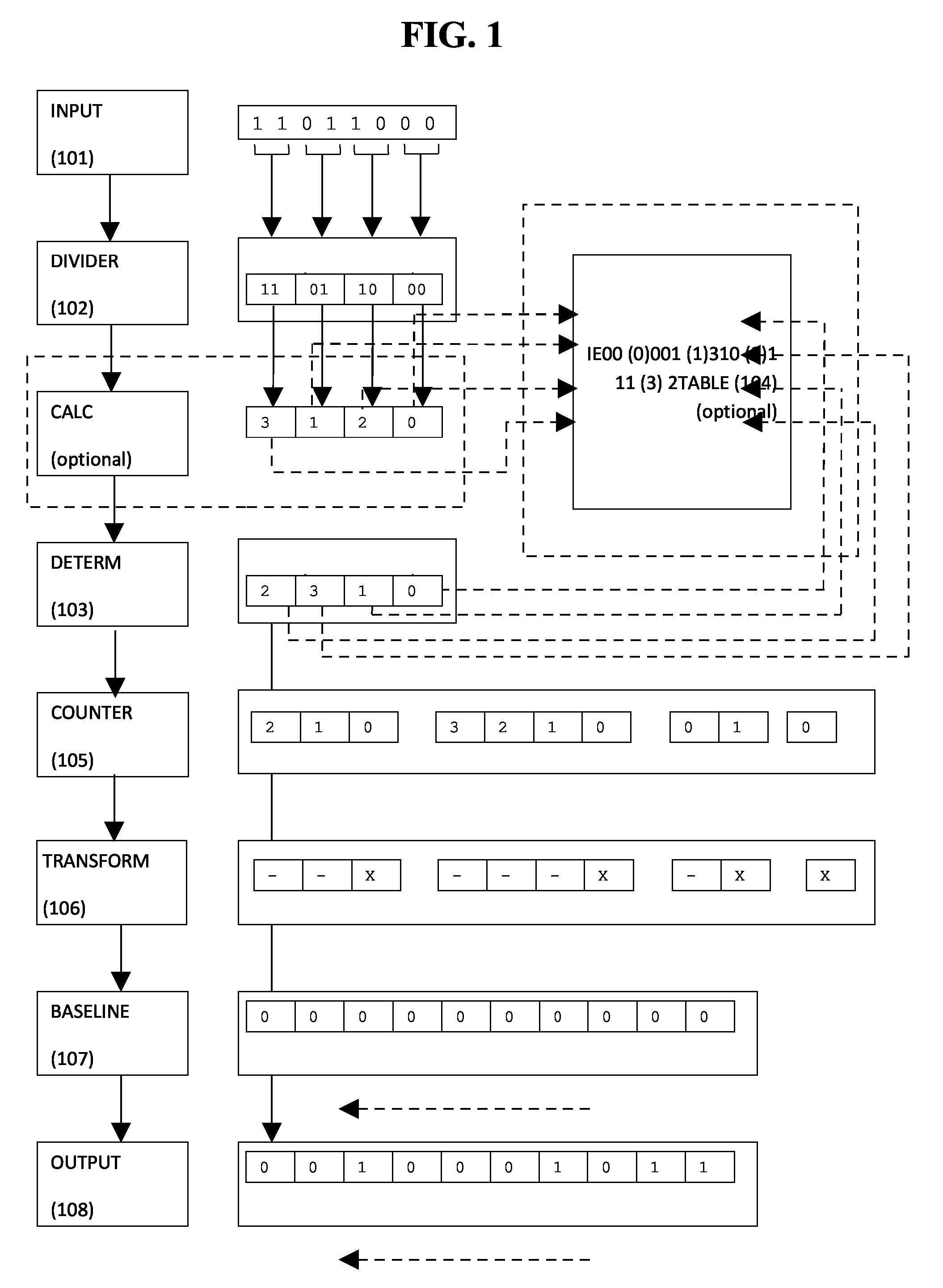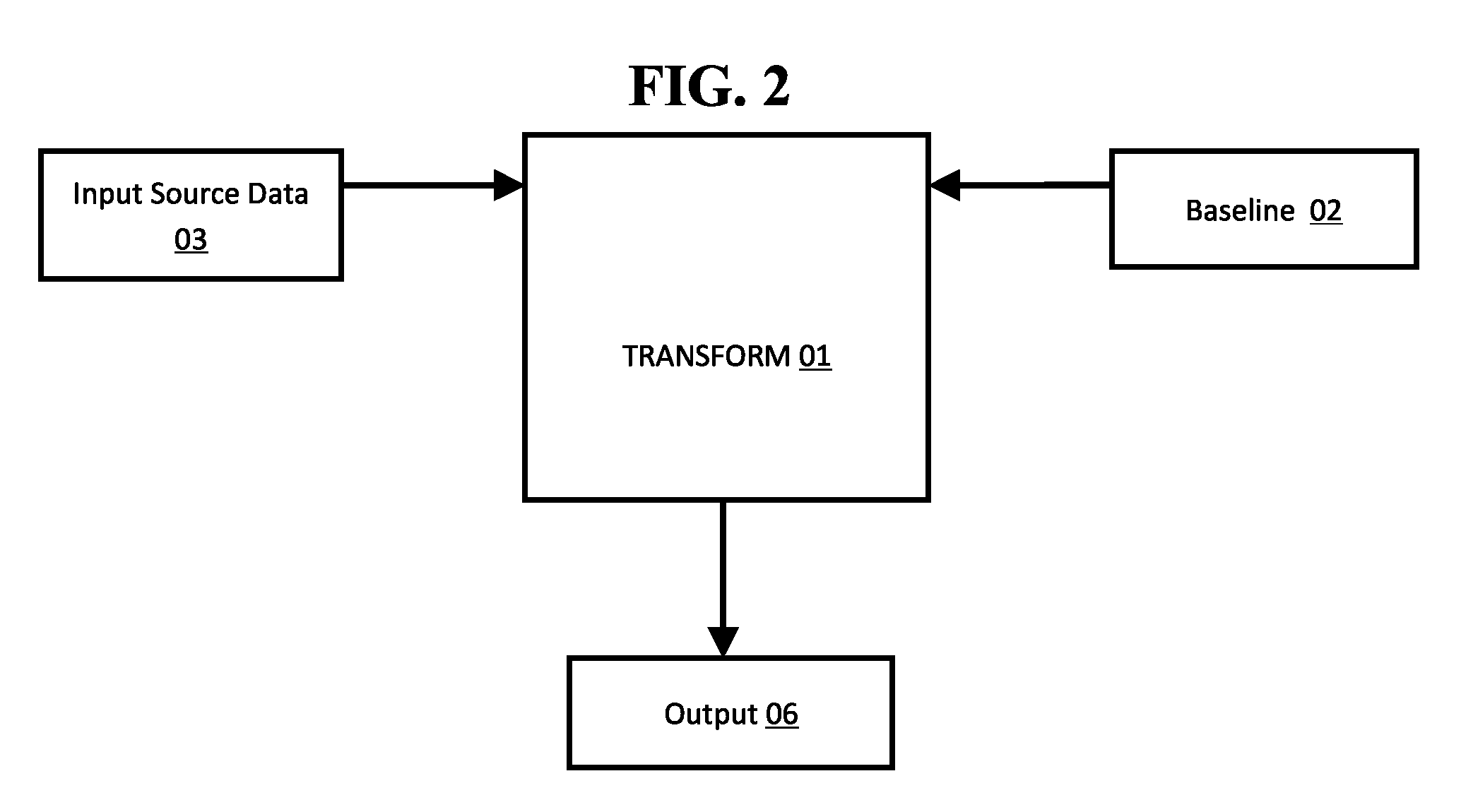Variable substitution data processing method
a data processing and variable substitution technology, applied in the field of data processing methods, can solve problems such as the need for encryption and keeping secrets, the shrinking scope of skill areas, and the inability to meet the requirements of logical data processing, so as to improve the performance of processing logical data operations and comparisons
- Summary
- Abstract
- Description
- Claims
- Application Information
AI Technical Summary
Benefits of technology
Problems solved by technology
Method used
Image
Examples
Embodiment Construction
A—Core Transformation
[0075]The core version of the transformation converts data from the currently standard; currently implemented or expected bit / byte memory structure to a structure with attributes of benefit and functionality. Such benefit and functionality would not normally be associated or derived from a type of memory or data structure.
[0076]The transformation involves taking two input sources to create an output. Of the two input sources at least one is an input source of data (“input data”) that is to be transformed; at least one is a source of data to provide a reference value, (“baseline”), on which the transformation process causes controlled and localised modification. Said modifications are based upon the “data source” or “data sources” and optionally in this and later enhancements through other options, settings and configurations. The output (“output”) is the result of the transformation.
[0077]The core transformation sets a size (“block size”) by which each “data sou...
PUM
 Login to View More
Login to View More Abstract
Description
Claims
Application Information
 Login to View More
Login to View More - R&D
- Intellectual Property
- Life Sciences
- Materials
- Tech Scout
- Unparalleled Data Quality
- Higher Quality Content
- 60% Fewer Hallucinations
Browse by: Latest US Patents, China's latest patents, Technical Efficacy Thesaurus, Application Domain, Technology Topic, Popular Technical Reports.
© 2025 PatSnap. All rights reserved.Legal|Privacy policy|Modern Slavery Act Transparency Statement|Sitemap|About US| Contact US: help@patsnap.com



